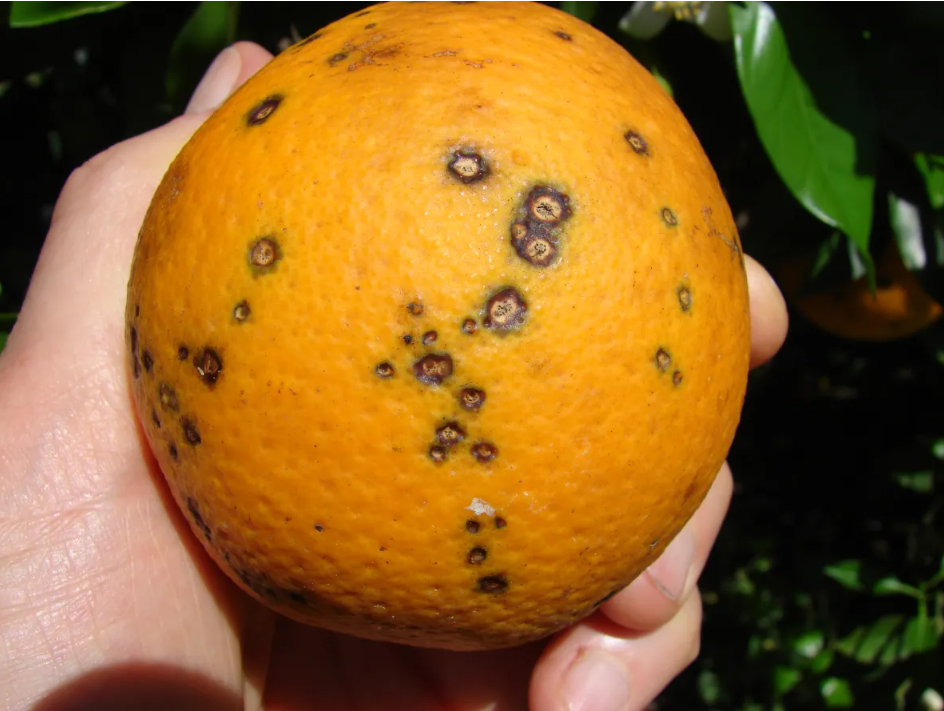Oranges are a beloved fruit known for their vibrant color, juicy taste, and high nutritional value. However, sometimes people encounter an unusual sight when peeling an orange a black spot inside. This can be concerning, especially when you’re about to consume what you believe is a healthy snack. In this article, we’ll dive into the causes of black spots inside oranges, whether they pose any health risks, and how to prevent them.
What Causes Black Spots Inside Oranges?
Several factors can lead to the appearance of black spots inside an orange, ranging from fungal infections to mechanical damage. These are the most common causes:
1. Fungal Infections
Fungi are one of the primary culprits for black spots inside oranges. The most prevalent fungal diseases that affect oranges include:
- Alternaria Rot: This is a common fungal disease that can cause black spots on the surface of the orange peel, which can extend into the flesh. Alternaria rot often occurs when the fruit is injured or weakened by environmental conditions like drought or frost.
- Phytophthora Fruit Rot: This fungal infection can lead to black spots in oranges, especially in humid conditions. The fungus can enter through damaged areas of the orange or even the root system.
- Anthracnose: Another fungal disease, anthracnose can cause dark, sunken spots on the orange’s surface. Though more commonly seen on leaves and twigs, it can affect the fruit’s internal flesh if the infection is severe.
2. Mechanical Damage
Mechanical damage during harvesting, transport, or handling can cause bruising, which may lead to black spots developing inside the orange. This damage may allow fungi or bacteria to enter the fruit and cause decay, resulting in the blackened areas.
3. Pests and Insects
Pests like fruit flies and other insects can lay eggs inside the fruit, leading to black spots as the larvae burrow into the flesh. While this isn’t common, it is a possibility in poorly maintained orchards or where pest control measures are not in place.
Are Black Spots Inside Oranges Safe to Eat?
The appearance of black spots inside an orange can be alarming, but is it safe to eat? The answer depends on the cause of the black spots:
1. Fungal Infections
If the black spot is caused by a fungal infection, such as Alternaria rot or Phytophthora, it is best to avoid eating that part of the fruit. The fungi responsible for these infections can produce toxins, particularly in damaged or decaying areas of the fruit. While not all fungal infections are harmful to humans, it is better to err on the side of caution and discard any parts of the fruit that are visibly affected.
2. Mechanical Damage
If the black spot is due to mechanical damage or bruising, the fruit may still be safe to eat. Simply cut away the damaged area. If the rest of the fruit appears fresh and unaffected, it can be consumed without issue. However, if the orange has developed an off-putting smell or a slimy texture, it is better to discard it altogether.
3. Pest Infestation
If pests or insects have caused the black spot inside the orange, it’s best to avoid eating the affected areas. While fruit flies and other pests are not usually harmful to humans, their presence indicates that the fruit may be compromised. Inspect the rest of the orange and discard it if you notice further damage or an unusual taste or texture.
Preventing Black Spots Inside Oranges
Prevention is always better than cure, and fortunately, there are steps that can be taken to reduce the likelihood of black spots forming inside oranges. Whether you’re a citrus farmer or simply someone who enjoys buying fresh oranges, here are some key preventive measures:

1. Proper Handling and Storage
Oranges are sensitive to rough handling and extreme temperature fluctuations. To prevent black spots caused by bruising, handle the fruit gently during harvesting and transport. Additionally, storing oranges at the right temperature—typically between 45°F and 48°F—helps maintain their freshness and prevent fungal growth.
2. Pest Control
Implementing effective pest control strategies in citrus orchards is essential for preventing black spots caused by insects. Regularly inspect fruit for signs of infestation and use natural or chemical pesticides to keep pests at bay. Proper orchard hygiene, such as removing fallen fruit, can also help minimize pest populations.
3. Fungicide Application
For farmers, applying fungicides can be an effective way to prevent fungal infections that cause black spots in oranges. However, it is important to follow guidelines to avoid overuse, which can lead to environmental issues and reduce the fruit’s quality. Organic farmers may opt for natural fungicide alternatives, such as neem oil, to prevent fungal growth.
4. Timely Harvesting
Harvesting oranges at the right time is crucial to preventing damage that can lead to black spots. Overripe or under-ripe fruit is more susceptible to fungal infections and mechanical damage. By harvesting the fruit when it is just ripe, you can reduce the likelihood of black spots developing.
Health Impacts of Black Spots Inside Oranges
Are there any long-term health impacts associated with consuming oranges that have black spots? Here’s what you need to know:
1. Toxins from Fungal Infections
As mentioned earlier, some fungi that cause black spots in oranges can produce harmful toxins. One such toxin is Alternariol, produced by the Alternaria fungus. Although the risk to humans is low if only small amounts are ingested, continuous exposure to these toxins could be harmful in the long run. Therefore, it is recommended to discard any oranges with extensive fungal infections.
2. Spoiled Fruit
If the black spots are a sign of spoiled fruit, it’s important to avoid consuming it. Spoiled fruit can harbor harmful bacteria that may lead to foodborne illnesses. Symptoms of consuming spoiled fruit include nausea, vomiting, and stomach discomfort.
Conclusion
The appearance of black spots inside oranges can be disconcerting, but understanding their causes and knowing when it is safe to eat the fruit can help ease concerns. Whether it’s caused by fungal infections, mechanical damage, or pests, it’s essential to carefully inspect the fruit before consumption. By adopting preventive measures, such as proper handling, pest control, and timely harvesting, you can enjoy fresh, healthy oranges without worrying about black spots.
Read More: Dollar Store Clear Umbrellas

